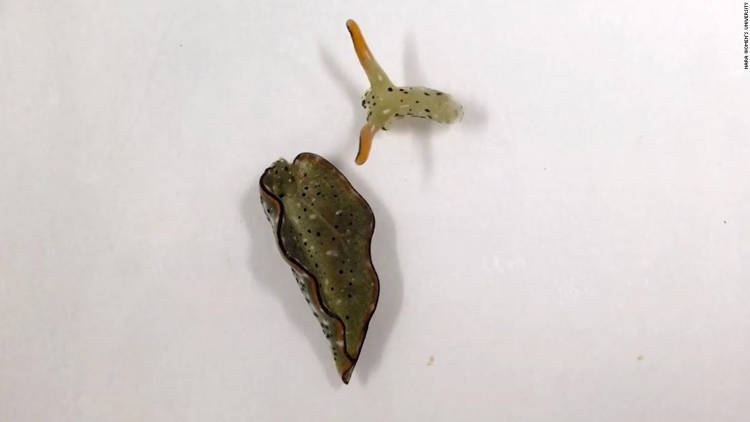Japanese researchers recently discovered the incredible ability of a sea slug to basically sever its own head and simply grow a new body, complete with fresh vital organs.
Autotomy describes the behaviour when an animal discards one or more of its own appendages as self-defence mechanism, only to grow them back later. We see them in regular house lizards. However, autotomy usually involves limbs or tails and not vital organs. However, a sea slug that can apparently sever its own head and then grow a new body complete with these vital organs.
Researchers at the Nara Women’s University in Japan were observing sea slug specimens of the genus Elysia, when they observed this behaviour. One of the slugs appeared to shed its whole body, continuing to live on as just the head. Scientists thought that it would die shortly after. But later, the disembodied slug started feeding on algae again. In a few days, the wound healed and within weeks it had developed a new body, complete with vital organs.
“This is the first example of such extreme autotomy as far as we know,” PhD student Sayaka Mitoh and ecologist Yoichi Yusa said. “Some other animals such as planarians, starfish, and polychaetes have greater abilities of regeneration, but most of them do not have a heart (in polychaetes, blood vessels with muscular pumps are sometimes called the heart).”
Interestingly, they concluded that only young specimens were capable of growing back their bodies. Older sea slugs that had hatched 480 to 520 days before severing their heads, could not survive the decapitation.
Weirdly enough, the discarded bodies of the slugs didn’t grow back their heads. However, responded to tactile stimuli for up to 10 months after the autotomy.
Researchers believe that it is an evolutionary mechanism that enables sea slugs to free themselves of parasites. All of the sea slugs that severed their heads during this study were infected with some sort of parasite. By getting rid of their bodies, they eliminate the parasite inhabiting it. None of the parasite-free even attempted this form behaviour.
Mitoh and Yusa will continue to study this new and intriguing form of autotomy. They will also investigate if this phenomenon occurs in other species of sacoglossans.
Source: Oddity Central









Leave a Comment